Figures & data
Figure 1. Spatial distributions of accumulative confirmed COVID-19 cases in China mainland on February 29th, 2020, and population outflows from Wuhan aggregated from January 1th to January 24th, 2020.
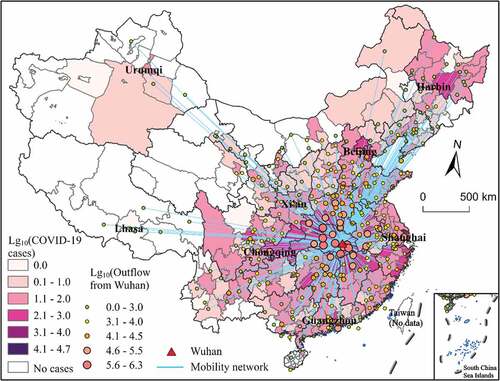
Figure 2. Temporal variations of 3-day averaged newly added COVID-19 cases in Wuhan, Hubei Province (excluding Wuhan), and outside Hubei in China mainland.
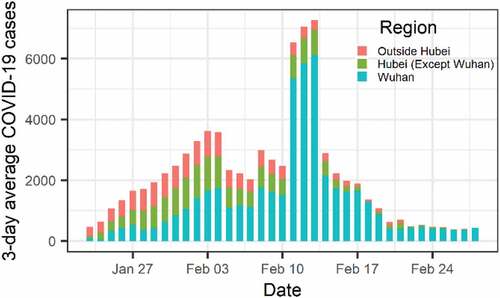
Figure 3. Global OLS regression models between population outflows from Wuhan and accumulative confirmed COVID-19 cases of Chinese prefecture-level cities on four specific dates (January 26th, February 5th, February 10th, and February 14th in 2020). Both explanatory variable and dependent variable are in logarithm scales. The cities in Hubei Province are in red color and the rest cities outside Hubei are in cyan color. The symbol sizes scale with the population of each city.
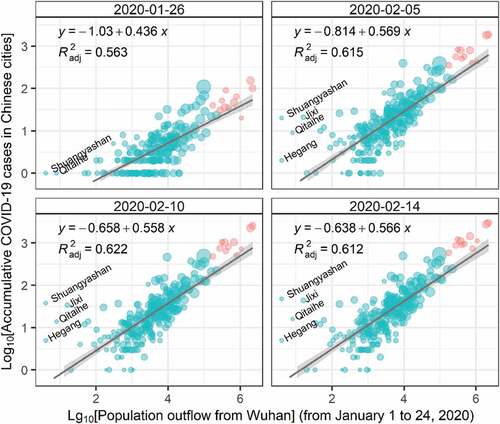
Figure 4. Spatial distributions of coefficients in GWR models. The dependent variable is the accumulative confirmed COVID-19 cases in Chinese cities, and the explanatory variable is the total outflows from Wuhan to each city during January 1th – 24th, 2020. Both explanatory variable and dependent variable are in logarithm scales. Cities with non-significant (p > 0.05) coefficients are marked by oblique lines in red.
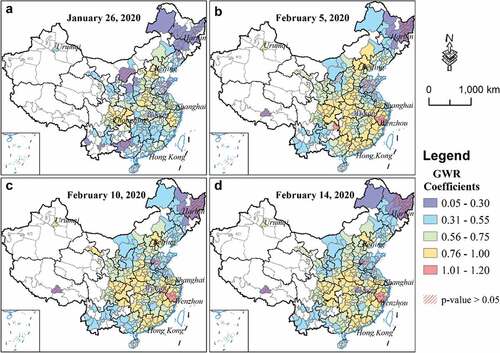
Figure 5. Spatial distributions of local R2 in GWR models. The dependent variable is the accumulative confirmed COVID-19 cases in Chinese cities, and the explanatory variable is the total outflows from Wuhan to each city during January 1th – 24th, 2020. Both explanatory variable and dependent variable are in logarithm scales. Cities with non-significant (p > 0.05) coefficients are marked by oblique lines in blue.
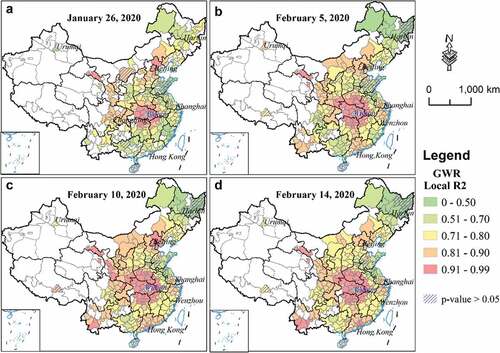
Figure 6. Adjusted R2 and corrected Akaike information criterion (AICc) values of the OLS and GWR models for accumulative COVID-19 cases. The dependent variable is the logarithm of accumulative confirmed COVID-19 cases in each prefecture-level city on each day from January 23th to February 29th, 2020. The explanatory variable is the logarithm of total population outflows from Wuhan to each prefecture-level city from January 1st to 24th, 2020.
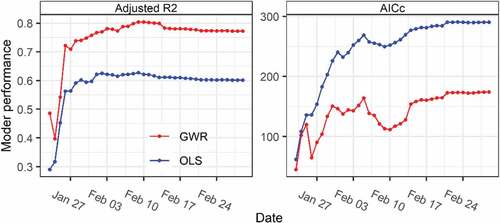
Figure 7. Global OLS regression models between population outflows from Wuhan and 3-day averagely added COVID-19 cases of Chinese prefecture-level cities on four specific dates (January 26th, February 5th, February 10th, and February 24th in 2020). Both explanatory variable and dependent variable are processed in logarithm scales. The cities in Hubei Province are in red and the rest cities outside Hubei are in light blue. The symbol sizes are scaled with the population of each city.
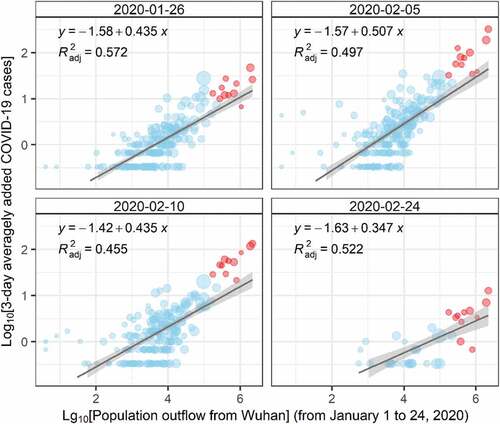
Figure 8. Adjusted R2 and corrected Akaike information criterion (AICc) values of the OLS and GWR models for newly added COVID-19 cases. The dependent variable is the logarithm of 3-day averagely increased COVID-19 cases in each prefecture-level city on each day from January 25th to February 29th, 2020. The explanatory variable is the logarithm of total population outflows from Wuhan to each prefecture-level city from January 1st to 24th, 2020.
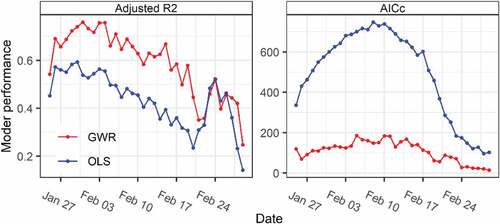
Data availability statement
The time-series data of confirmed COVID-19 cases of each prefecture-level city is publicly available from China Data Lab at Harvard University (https://projects.iq.harvard.edu/chinadatalab/resources-covid-19). The outflow data from Wuhan during January 1-24, 2020 is publicly available at the website (https://www.nature.com/articles/s41586-020-2284-y#MOESM1).
